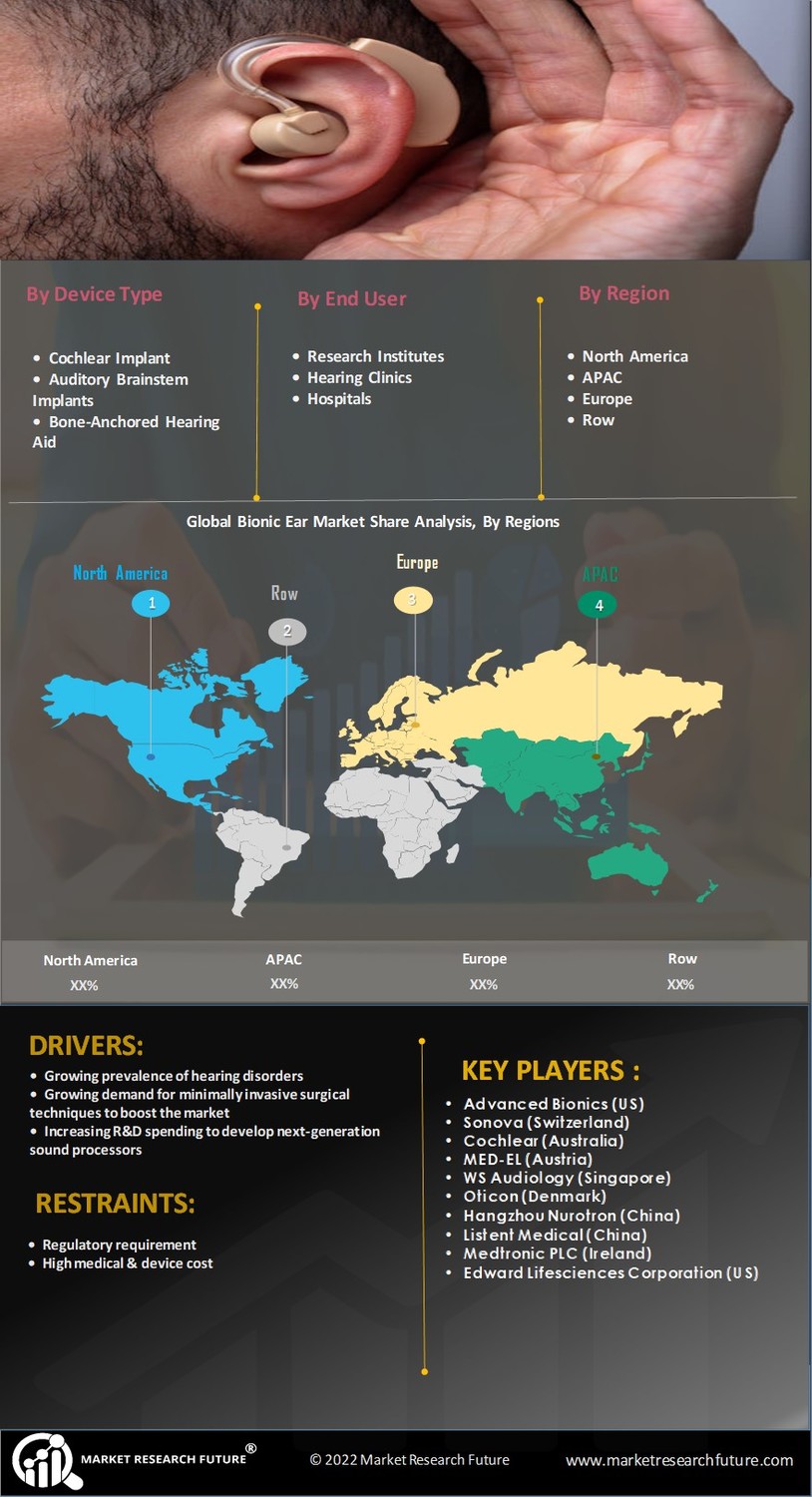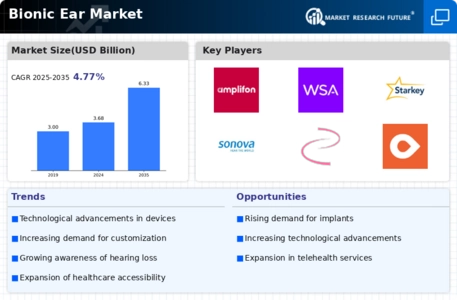Aging Population
The demographic shift towards an aging population is a significant factor influencing the Global Bionic Ear Market Industry. As life expectancy increases, the number of elderly individuals experiencing hearing loss is also rising. This demographic trend creates a substantial market for bionic ear solutions, as older adults often seek effective ways to manage their auditory impairments. The market's growth trajectory reflects this reality, with projections indicating a value of 3.68 USD Billion in 2024. The aging population's demand for innovative hearing solutions is likely to drive ongoing advancements and investments in bionic ear technologies.
Market Growth Projections
The Global Bionic Ear Market Industry is projected to experience substantial growth over the next decade. With an estimated market value of 3.68 USD Billion in 2024, the industry is expected to reach 6.33 USD Billion by 2035. This growth trajectory suggests a compound annual growth rate of 5.06% from 2025 to 2035, indicating a robust demand for bionic ear technologies. Factors contributing to this growth include technological advancements, increasing prevalence of hearing loss, and supportive government initiatives. The market's expansion reflects a broader trend towards innovative healthcare solutions that address auditory impairments.
Technological Advancements
Innovations in bionic ear technology are transforming the landscape of auditory solutions. Advances in digital signal processing, miniaturization, and wireless connectivity are enhancing the functionality and user experience of bionic ears. These developments not only improve sound quality but also facilitate seamless integration with other devices, such as smartphones. The Global Bionic Ear Market Industry is poised for growth as these technologies become more accessible and affordable. The anticipated market value of 6.33 USD Billion by 2035 underscores the potential impact of these advancements on consumer adoption and satisfaction, ultimately leading to a broader acceptance of bionic ear solutions.
Growing Awareness and Education
The rise in awareness regarding hearing health and available treatment options is a crucial driver for the Global Bionic Ear Market Industry. Educational campaigns and outreach programs are informing the public about the benefits of bionic ears, leading to increased demand. As more individuals recognize the importance of addressing hearing loss, the market is expected to flourish. This heightened awareness is likely to correlate with the projected market growth, as the industry adapts to meet the needs of a more informed consumer base. The ongoing efforts to educate the public may further enhance the acceptance and utilization of bionic ear technologies.
Rising Prevalence of Hearing Loss
The increasing incidence of hearing loss globally drives the demand for bionic ears. According to the World Health Organization, approximately 1.5 billion people experience some degree of hearing loss, a figure projected to rise significantly. This trend is particularly evident in aging populations, where the prevalence of hearing impairment escalates. As the Global Bionic Ear Market Industry expands, it is anticipated that the market will reach 3.68 USD Billion in 2024, reflecting the urgent need for effective hearing solutions. The growing awareness of available technologies further propels market growth, as individuals seek innovative options to enhance their auditory experiences.
Government Initiatives and Funding
Government initiatives aimed at improving healthcare access significantly influence the Global Bionic Ear Market Industry. Various countries are implementing policies to subsidize hearing aids and bionic ear technologies, thereby reducing financial barriers for patients. For instance, national health services in several regions are expanding coverage for hearing loss treatments, which encourages more individuals to seek assistance. This supportive environment is likely to contribute to a compound annual growth rate of 5.06% from 2025 to 2035, as increased funding and awareness lead to higher adoption rates of bionic ear solutions.























Leave a Comment